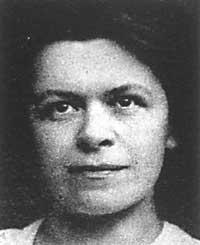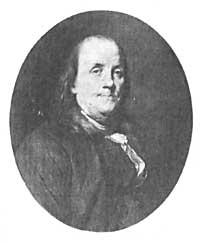Women's contribution to the historical and human development of "official" science. Some data.
1999/06/01 Nuño Angós, Teresa Iturria: Elhuyar aldizkaria

Thus, girls and women find themselves without a model of women who have worked in the scientific field (Marina Subirats and Cristina Bruillet, 1990). And the lack of this identification model reinforces women's tendency to move away from scientific areas. Since the traces of humanity are known, women have participated in the development of science, but in their androcentric history they have become invisible both them and their contributions.
The “woman collecting plants” can be considered the first “botany”, also founder of agriculture, inventor of pottery and food conservation procedures. In the time before written history, that is, between the years 8000 and 3000 before our era, we find women among the people who acquired empirical knowledge about the transformation of materials in the Middle East. The women caused the first chemical changes: heating the clay removes the water from the hydrated aluminum silicate and gets the soil cooked. This obtained substance has very different characteristics, since it is not moldable or can be undone with water.
The rotation of the shaft caused some natural fibers, such as wool, linen, and then cotton and silk, to become threads, resulting in different molecular arrangements. At this time also belong the following knowledge: plants, their cultivation and harvest; those useful for planting, collecting and transforming them into food; the biochemical process of bread-making and obtaining fermented liquor. Women were also first time inventors, making ceramic utensils and objects and using the wheel. All these processes, according to the ethnographic data we have, were mainly in the hands of women. The transmission of this practical knowledge is at the very origin of what we call science today (Nuria Solsona, 1997).
In some pieces of cooked clay from the second millennium BC, with cuneiform script, the names of the first chemical women appear: The Tapputi-Belatek allim and (…) ninu of Mesopotamia, worked in perfumery and wrote an old text on the matter (Sherida Houlihan and John H. Wotiz, 1975).

On the other hand, the beginnings of medicine, that is, doctors, midwives and sorcerers were also women (until entering the University of Medicine, then remained in the hands of men and prohibited access to women). According to Barbara Ehrenreich and Deirdre English (1981): Women were the first doctors and anatomists in Western history. They were the first pharmacological with their medicinal plants... For centuries they were untitled doctors, expelled from the book and official science. The people of the village called them wise women and the authorities considered them witches…
However, official science, which works with great models and theories to explain nature, did not consider these "technological advances" fundamental to the development of human beings as science until it was in the hands of men.
As for official science, women who have participated have become invisible by various facts, including:
- In some cases they have forgotten, such as the philosopher Hypatia of Alexandria (370-415), the mathematician (developed diophantine equations and made critical comments on the works of Euklides and Ptolemy) and the inventor (inventor of a water distillation instrument, hydrometer, plane astrolabe), author of Kubdegard Babreaken, 199. Osen, 1982).
- Others have researched with men and are in the shade: Theano (B.C.) VI. 1858-1836) philosopher, mathematician and physician, wife of Pythagoras; Marie Anne Paulze "Lavoisier" (1758-1836), who along with her husband settled the beginnings of modern chemistry; Caroline Herschel (1750-1848), astronomer who worked with her brother and discovered eight comets; Bagada Auladgusta baillac, ViocheMargaret Alic, 1991, Nuria Solsona, 1997). XX. In the 19th century, Rosalind Franklin (1920-1958) was part of a quartet that discovered the structure of DNA: this work won the Nobel Prize in 1962, but Rosalind could not be awarded for her death four years earlier. Although his participation is fundamental, he was despised because his colleagues, especially Maurice Wilkins, considered him a collaborator. Rosalind Franklin's work allowed James Watson and his collaborator Francis Crick to find the helical structure of the DNA molecule by correcting Watson's research errors (Anne Sayre, 1997). Also noteworthy is the controversy raised in recent years about the participation of Mileva Maric in the theory of relativity by Albert Einstein. Following the magnificent theories about the light, space and time of Albert Einstein, could be Mileva Maric, his first wife, according to an American researcher who has studied the letters between the two and another German. It is possible that in the articles published by Einstein in 1905, among which was the Nobel Prize in Physics in 1921, Maric participated more than expected so far. Evan Harris, a physicist at the Maryland military laboratory in the United States, chief advocate of the forgotten scientist Mileva Maric, speaks of phrases drawn from letters written by Einstein and Marice before 1905. In a 1901 letter Einstein wrote (1990): "What happiness and pride we will have when we achieve the success of our work on the relative movement." According to Walker, there are ten other examples where Einstein talks about "our work" or collaboration. In addition, in the divorce agreement between the scientist and his first wife, Einstein agreed that any prize he could win in the future would be for his former wife, and so he did when Einstein won the Nobel Prize in 1921 (EL PAÍS, March 29, 1990).
 Caroline Herschel1750-1848
Caroline Herschel1750-1848 - The contributions of others have come covered under the names of men: Trotula de Salero XI. In the 20th century he wrote a treatise on women's diseases (Passionibus mulierum), but Eros Juliae appeared as a man in a 1566 publication. Sophie Germain (1776-1831), mathematician M.The work, which signed with the name of Le Blanc, won in 1816, with its own name, the Grand Prix of the French Academy of Sciences for the explanation of vibrations of elastic surfaces, and in the theory of numbers (Amy Dahan, 1992). Catherine Littlefield "Greene" invented in 1794 the cotton gin with her employee Ely Whitney, but the invention patent they registered as Ely (Frances A). Karnes and Suzanne M. Bean, 1995).
 Marie Anne Paulze-Lavoisier and Antoine Lavoisier, in 1788.
Marie Anne Paulze-Lavoisier and Antoine Lavoisier, in 1788. - Another type of participation of women in science has been the dissemination of works and research by scientists, especially in the XVII. and XVIII. made for centuries. Among them: Margaret Lucas "Cavendish", Duchess of Newcastle (1623-1673), disseminator of Descartes' mechanics and defender of epicural atomism; Maria Cunitz (1610-1664), astronomer, who disseminated Kepler's theories by simplifying their calculations; Marquis de Châtelet, Émile de Bretnibenes, 1965, and Leib6benes.
- Finally, I will deal with the participation of women in the most "small" history, making reference to the contributions to facilitate the work usually performed by women. Mary Engle Pennington developed at the beginning of this century the scientific basis of frozen food from the Head of the U.S. Department of Food Research. In 1912 Melitta Benz invented and patented the café that bears his name. Bette Nesmith Graham was in 1950 who created the liquid paper "tippex". By the hand of Marion Donovan, we get the "dodotis" in 1959; in the 1960s Julie Newman patented the "pantys"; and other women like tissue paper, calciner, hair dryer... (Paz Gastaudi et al. 1992 Frances A. Karnes and Suzanne M. Bean, 1995). In addition, and as I left out (because it would be too long), I want to emphasize that ten women in the scientific field are awarded the Nobel Prize (see table 1) (Ulla Fölsing, 1992; Berta Marco, 1994). All,Except for Maria Sklodowska, they are unknown to both science students and school books used in science education (Teresa Nuño and Teresa Ruipérez, 1997).
 Related information1718-1799
Related information1718-1799
As we can see, there were and are women in all areas of science and technology; now we should analyze how they have been, what they have refused to be there or to be, what kind of science they did, what possibilities they have had (epoch, social origin, family, education), etc., but all this would require other works.
Year | Area | Winners | Discovery |
1903 | Physics | Marie Sklodowska Curie Pierre Curie Antoine Henri Becquerel | Radioactivity |
1911 | Chemistry | Marie Sklodowska Curie | Radio purification |
1935 | Chemistry | Irene Curie Joliot Frédéric Joliot | Method of generating artificial radioactive elements (new) (synthesis) |
1947 | Physiology and Medicine | Theresa Gerty Cory Carl F. Cory Bernardo A. Houssay | Mechanism of interconversion between glucose and glycogen and synthesis and isolation of the generating enzyme (phosphorylase) of the same process |
1963 | Physics | Related information J. Hans D. Jensen Eugene Paul Wigner Mayer | Atomic core surface structure |
1964 | Chemistry | Dorothy Crowfoot Hodgkin | Structure of insulin, cholesterol, penicillin and vitamin B12 |
1977 | Physiology and Medicine | Related information R. Guillemin A.V. Schally | Radioisotope diagnosis and marking (radioimmunity test method) |
1983 | Physiology and Medicine | Barbara Mc.Clintock | Genetic transposition: displacement of gene elements (transposons) |
1986 | Physiology and Medicine | Related information Stanley Cohen | NGF or nerve growth factor. |
1988 | Physiology and Medicine | Gertrude B. Elio George H. Hitchings Sir James Black | Discovery of some of the principles of leukemia and new osabide against heart and viral diseases |
1995 | Physiology and Medicine | Christiane Nüssiein-Volhard. Edward Lewis and Eric Wieschaus | Genetic control of early embryo development. |
BIBLIOGRAPHY
- ALIC, M. (1991). The legacy of Hypatia. History of women in science from Antigúedad to the end of the 19th century. Mexico: 21st century.
- DAHAN, A. (1992). 'Sophie Germain'. Research and Science, February, 71-75.
- Ehrenreich B. and English D. (1988). Witches, midwives and nurses. • Barcelona: La Sal Edicions de les dones.
- Einstein, A. (1990). Letters to Mileva. Madrid: Mondadori.
- FÖLSING, U. (1992) Women Nobel Prize. Madrid: Alliance.
- GASTAUDI, P., ALONSO, I. CANESANI, C., MARIN, P.,
- MENDEZ, Y. ALCALA, P. (1992). - Madrid: - M.E.C.
- HOULIHAN, S. and WOTIZ, J.H. (1975). 'Women in Chemistry before 1900'. Journal of Chemical Education, 52 (6), 362-364.
- KARNES, S.L. and BEAN, S.L. (1995). Girls and young women inventing. Minneapolis: Free Spirit Publishing.
- MARCO, B. (1994). "Dorothy Hodgkin. Passion for crystals." Review, November 18-21.
- MAZENOD, L. (1965). The famous women. Volume II. Madrid: Gustavo Gil.
- NUÑO, T. and RUIPEREZ, T. 1997. "Analysis of textbooks from a gender perspective." Still, 11, 55-64.
- OGILVIE, B. M. (1988). Women in Science. Antiquity through the Nineteenth Century. Cambridge: The MIT Press.
- OSEN,M.L. (1982). Women in Mathematics. Cambridge: The MIT Press.
- SAU, V. (1990). Feminist ideological dictionary. Barcelona: Icaria.
- SAYRE, A. (1997). Rosalind Franklin and DNA. Madrid: • (1975) Rosalind Franklin and the DNA.
- SOLSONA, N. (1997). - Madrid: Talasa.
- SUBIRATS, M. and BRUILLET, C. (1990). Coeducation. Madrid: MEC.

Gai honi buruzko eduki gehiago
Elhuyarrek garatutako teknologia





